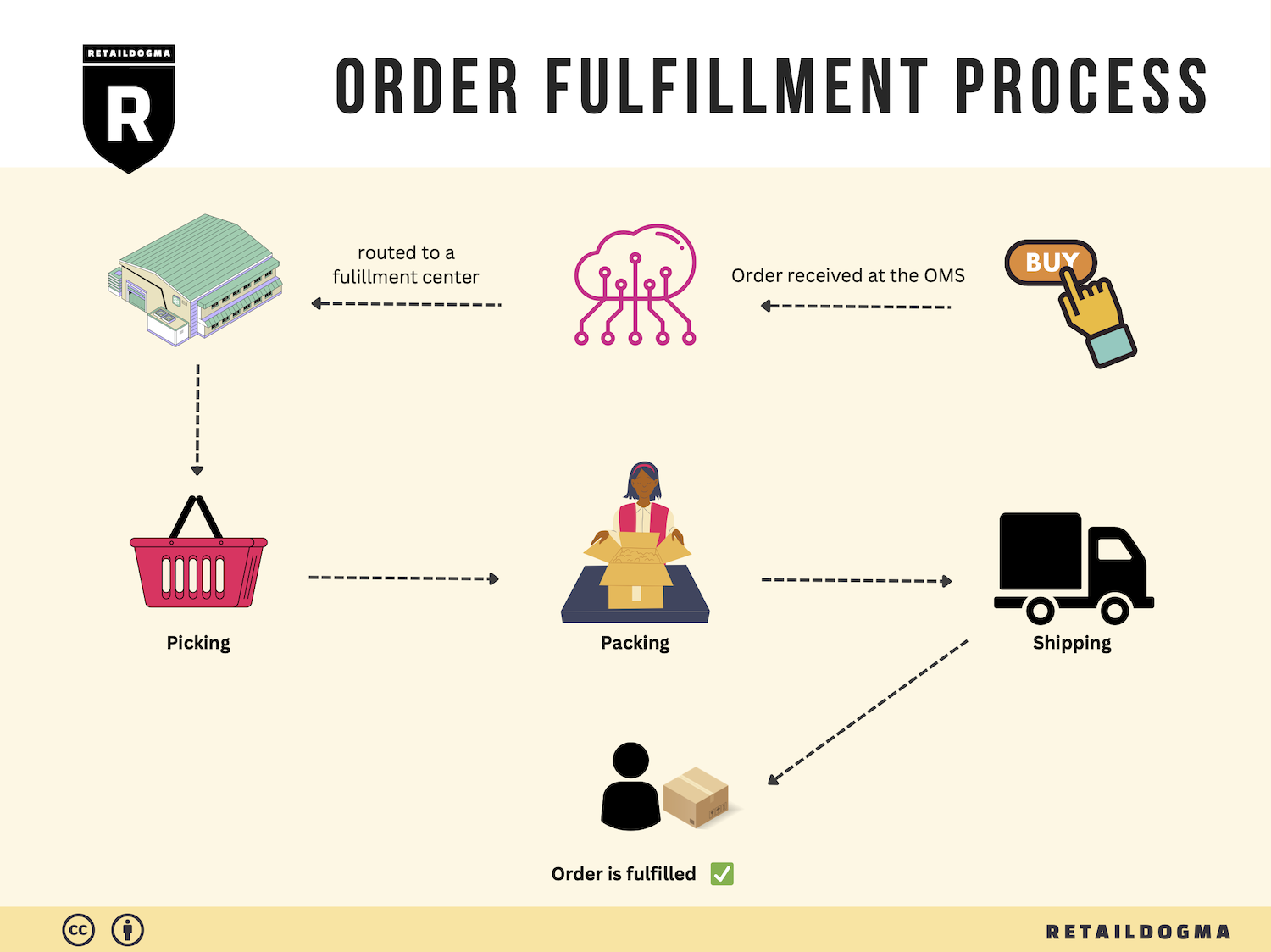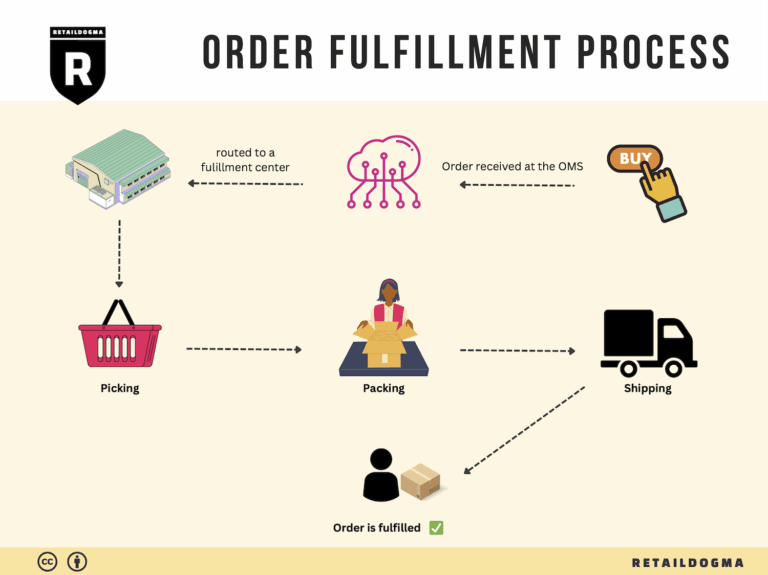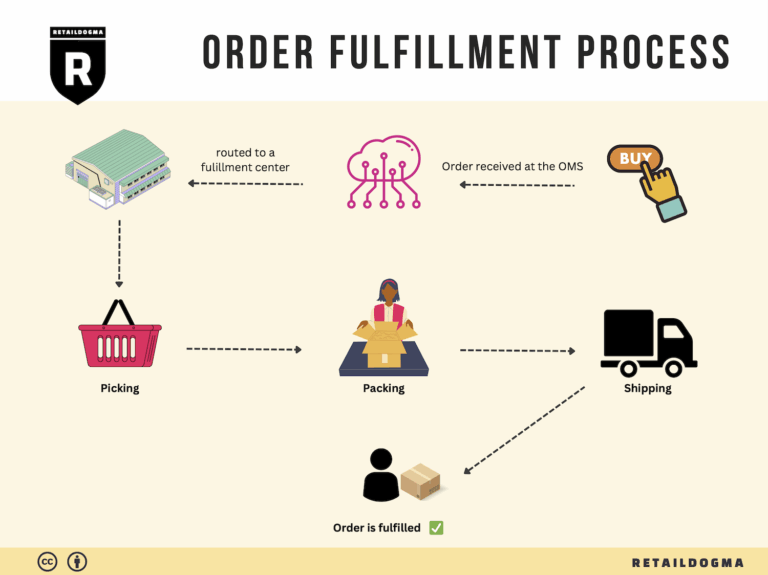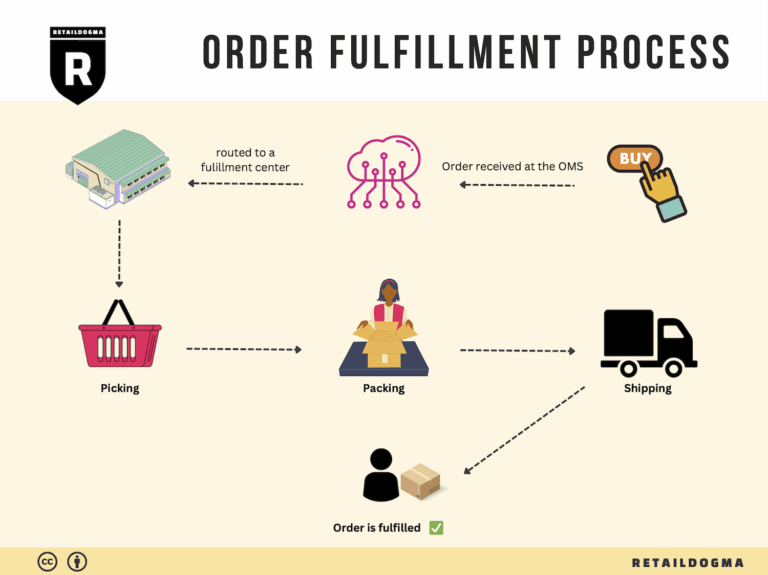How Order Fulfillment Works: A Step-by-Step Guide for Businesses
What is E-commerce Fulfillment? An Introduction for Growing Businesses
Introduction to E-commerce Fulfillment
As your online business begins to gain traction, you may find yourself grappling with the complexities of packing and shipping orders. What once seemed manageable can quickly become overwhelming, diverting your attention from vital tasks like product development and marketing. This is a common pain point for many growing e-commerce businesses: the logistical challenges of fulfilling customer orders efficiently and effectively.
E-commerce fulfillment is simply the process of getting a product to a customer. It encompasses everything from receiving inventory and storing it, to picking, packing, and shipping orders. As your business scales, understanding the intricacies of fulfillment becomes crucial. This guide is designed to demystify the world of e-commerce fulfillment, providing you with actionable insights and practical advice.
We will explore various fulfillment models, including Third-Party Logistics (3PL) and Fulfillment by Amazon (FBA), each with its own set of advantages and challenges. Understanding these models will help you determine which option best aligns with your business goals and customer expectations.
In addition to fulfillment models, we will delve into the core services offered by fulfillment providers. These can include inventory management, order processing, shipping solutions, and returns handling. Each service plays a critical role in enhancing customer satisfaction and streamlining operations.
Choosing the right fulfillment partner is another vital consideration. We will outline key factors to evaluate when selecting a provider, such as scalability, technology integration, and customer support. Making an informed choice can significantly impact your operational efficiency and overall business growth.
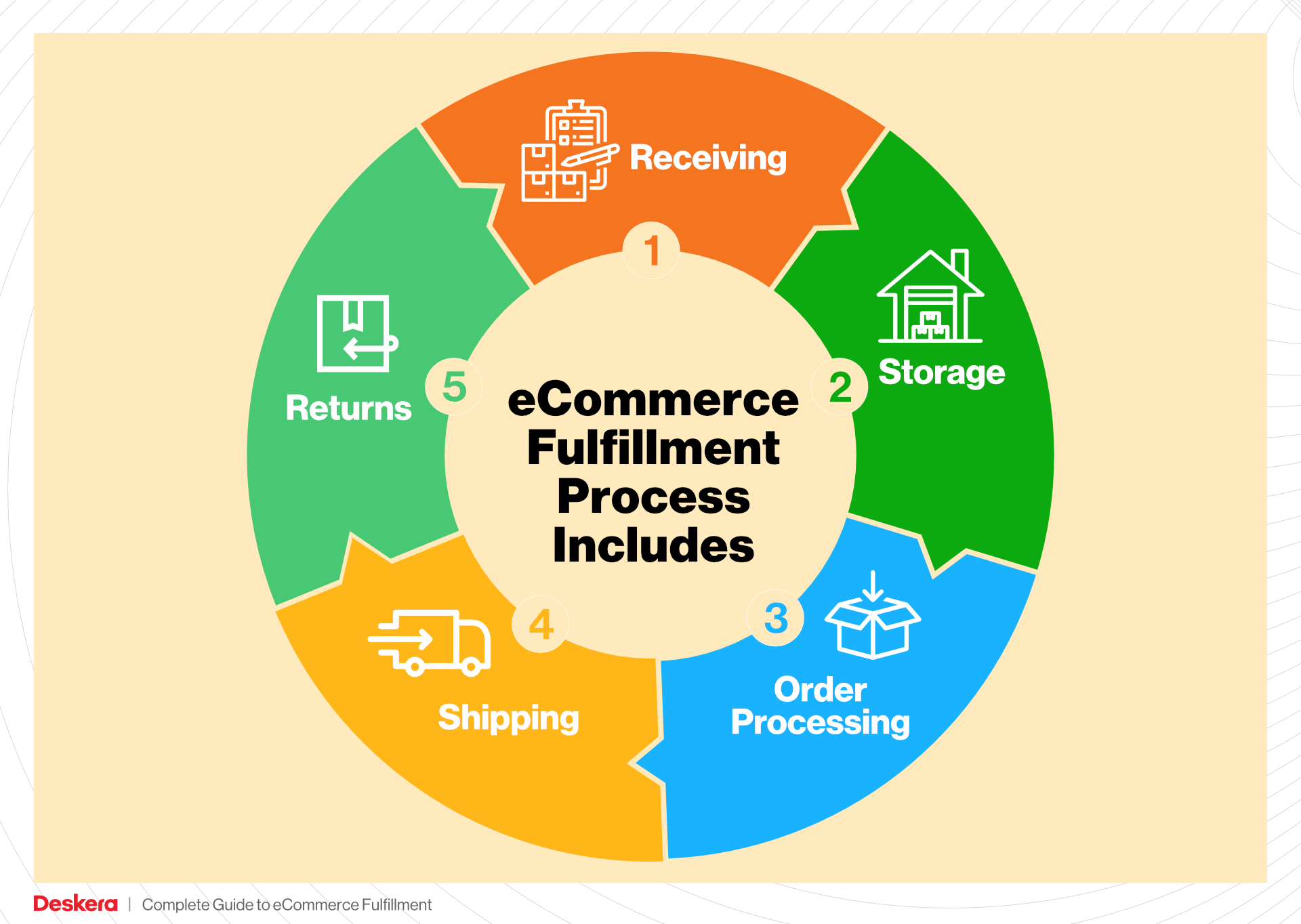
Lastly, we will discuss pricing structures commonly associated with fulfillment services. Understanding how pricing works will enable you to budget effectively and avoid unexpected costs as your business expands.
The goal of this guide is to empower you to make smart, informed decisions about your logistics and fulfillment strategies. By leveraging the insights provided here, you can streamline your operations, enhance customer satisfaction, and ultimately drive your business towards sustainable growth. Let’s embark on this journey to transform your e-commerce fulfillment process into a strategic advantage.
What You’ll Learn In This Guide
- What is E-commerce Fulfillment? An Introduction for Growing Businesses
- The Order Fulfillment Process: From ‘Buy’ Button to Customer’s Door
- Comparing Fulfillment Models: In-House vs. 3PL vs. Dropshipping
- A Deep Dive into Amazon FBA: Pros, Cons, and Who It’s For
- Core Services Offered by Fulfillment Centers
- How to Choose a Fulfillment Partner: A 6-Point Checklist
- Understanding Fulfillment Pricing: A Breakdown of Common Fees
- Frequently Asked Questions (FAQs) about Fulfillment
- Conclusion: Is Outsourcing Fulfillment the Right Move for Your Business?
- Important Disclaimer
The Order Fulfillment Process: From ‘Buy’ Button to Customer’s Door
1. Receiving Inventory
The order fulfillment process begins with receiving inventory at the fulfillment center. When products arrive from suppliers or manufacturers, they are checked against purchase orders to ensure accuracy. This step involves verifying quantities, inspecting for damages, and logging items into the inventory management system using a unique identifier known as a SKU (Stock Keeping Unit).
This step is crucial because accurate receiving lays the foundation for effective inventory management. If discrepancies occur at this stage, it can lead to stockouts or overstock situations, both of which can negatively impact customer satisfaction and operational efficiency. By utilizing a robust inventory management system, businesses can track inventory levels in real time, which aids in making informed purchasing decisions and maintaining optimal stock levels.
2. Warehouse Storage
Once the inventory is received and accounted for, the next step is warehouse storage. Products are strategically organized within the fulfillment center based on their SKU and other relevant attributes, such as size or weight. This organization often involves the use of warehouse management systems (WMS) that optimize storage space and enable efficient retrieval.
Proper storage is vital for several reasons. It not only maximizes the use of available space but also facilitates quicker order processing. Items that are frequently ordered might be placed in easily accessible locations, reducing the time it takes to pick them for shipment. Effective warehousing practices can significantly enhance operational efficiency and reduce labor costs, which are critical factors for scaling an e-commerce business.
3. Order Picking
The next phase is order picking, where fulfillment staff retrieve items from storage based on customer orders. This process typically involves generating a pick list, which details the items, quantities, and locations within the warehouse. Efficient picking methods, such as batch picking or zone picking, can be employed depending on the volume of orders and the layout of the warehouse.
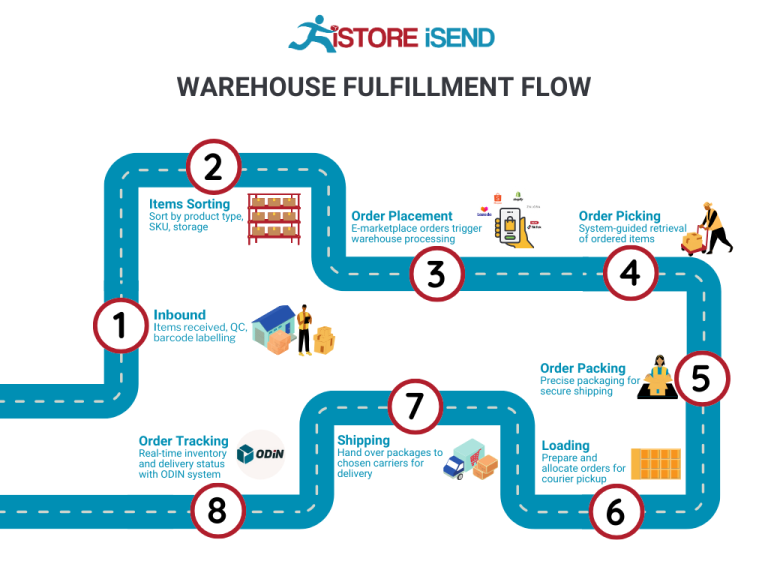
Order picking is a critical step in the fulfillment process because it directly impacts order accuracy and speed. Errors made during picking can lead to incorrect shipments, resulting in customer dissatisfaction and increased return rates. By streamlining the picking process and employing technology like barcode scanners, businesses can enhance accuracy and efficiency, ensuring that customers receive the correct products in a timely manner.
4. Order Packing
After items are picked, they move to the order packing stage. This involves securely packing products into boxes or envelopes, often using packing lists and invoices to ensure that the correct items are included. Packaging materials should be chosen based on the nature of the products, considering factors such as fragility and weight.
The packing process is important for multiple reasons. It protects products during transit, ensuring they arrive at the customer’s door in pristine condition. Additionally, well-packed orders reflect positively on the brand, enhancing the overall customer experience. Using branded packaging can also serve as a marketing opportunity, reinforcing brand identity and encouraging repeat purchases. This step is also where businesses can implement sustainable practices by opting for eco-friendly packaging materials, which can attract environmentally conscious consumers.
5. Shipping & Delivery
The final step in the order fulfillment process is shipping and delivery. Once packed, orders are labeled and handed over to shipping carriers. Businesses often choose carriers based on factors such as cost, delivery speed, and reliability. Integration with shipping software can automate this process, providing real-time tracking information to customers.
Shipping and delivery are crucial for customer satisfaction. Fast and reliable delivery can significantly enhance the customer experience and drive repeat business. In today’s competitive e-commerce landscape, consumers expect prompt delivery, making it essential for businesses to establish strong relationships with shipping carriers and to utilize technology that optimizes shipping routes and reduces costs. Furthermore, offering multiple shipping options can cater to diverse customer preferences, enhancing overall service quality.
By understanding and optimizing each of these five steps in the order fulfillment process, e-commerce businesses can improve operational efficiency, reduce costs, and ultimately enhance customer satisfaction—key components for scaling successfully in the digital marketplace.
Comparing Fulfillment Models: In-House vs. 3PL vs. Dropshipping
Comparison of Fulfillment Models
| Model | Who Handles Inventory | Best For (Business Stage) | Key Advantage | Key Disadvantage |
|---|---|---|---|---|
| In-House Fulfillment | The business itself | Established businesses | Full control over inventory and processes | High overhead costs and resource demands |
| Third-Party Logistics (3PL) | 3PL provider | Growing businesses | Access to expertise and scalable solutions | Less control over fulfillment operations |
| Dropshipping | Supplier or manufacturer | Startups and small businesses | Low upfront costs and reduced risk | Lower profit margins and dependency on suppliers |
In-House Fulfillment
In-house fulfillment refers to the process where a business manages its own inventory, warehousing, and order fulfillment operations. This model is ideal for established businesses that have the resources and infrastructure to handle logistics internally. Businesses that choose this model maintain full control over their inventory and fulfillment processes, allowing them to tailor operations precisely to their needs. They can implement custom packing, branding, and shipping strategies that align with their customer service goals. However, the key disadvantage of in-house fulfillment lies in the significant overhead costs associated with maintaining a warehouse, hiring staff, and managing logistics. Additionally, the demands of running an in-house operation can divert focus from core business functions such as product development and marketing, potentially stifling growth.
Third-Party Logistics (3PL)
Third-party logistics (3PL) involves outsourcing fulfillment operations to a specialized provider. This model is particularly beneficial for growing businesses that need to scale their logistics without the burden of managing every aspect themselves. 3PL companies offer a range of services, including warehousing, inventory management, order processing, shipping, and returns handling. By leveraging the expertise and resources of a 3PL, businesses can enhance their operational efficiency and customer satisfaction. The key advantage of using a 3PL is access to scalable solutions that can adapt to varying order volumes and seasonal fluctuations. However, a notable disadvantage is the reduced control over fulfillment operations, which may affect the customer experience if the 3PL does not meet the business’s quality standards. Moreover, partnering with a 3PL can lead to reliance on external parties for critical logistics processes, necessitating diligent selection and management of the 3PL provider.
Dropshipping
Dropshipping is a fulfillment model where the retailer does not keep goods in stock but instead transfers customer orders and shipment details directly to a manufacturer or wholesaler, who then ships the products to the customer. This model is particularly advantageous for startups and small businesses with limited capital. The key advantage of dropshipping is the minimal upfront investment required, as there are no inventory costs or warehousing expenses. This allows entrepreneurs to test product ideas and market viability without significant financial risk. However, dropshipping also presents several challenges. Profit margins are often lower due to wholesale pricing, and businesses are heavily reliant on suppliers for product quality, shipping times, and inventory levels. Any delays or errors on the supplier’s part can directly impact customer satisfaction and brand reputation. Additionally, the lack of control over inventory management and fulfillment processes can lead to inconsistencies that may harm customer loyalty in the long term.
Conclusion
Choosing the right fulfillment model is critical for e-commerce businesses aiming to scale their operations effectively. In-house fulfillment provides control but comes with high overhead, while 3PL offers scalability and expertise but at the cost of some control. Dropshipping presents a low-risk entry point but can lead to challenges with profit margins and supplier reliability. Each model has its advantages and disadvantages, making it essential for business owners to carefully assess their current needs, future growth plans, and operational capabilities before making a decision.
A Deep Dive into Amazon FBA: Pros, Cons, and Who It’s For
Understanding Fulfillment by Amazon (FBA)
Fulfillment by Amazon (FBA) is a service offered by Amazon that allows businesses to store their products in Amazon’s fulfillment centers. Amazon then takes care of storage, packaging, shipping, and customer service on behalf of the seller. This service enables sellers to leverage Amazon’s vast logistics network, making it easier for them to reach millions of customers worldwide.
How FBA Works
-
Product Listing: Sellers create listings for their products on Amazon, just like they would with any other e-commerce platform.
-
Inventory Shipping: Sellers send their inventory to Amazon’s fulfillment centers. Once the products arrive, Amazon takes over the logistics.
-
Storage: Amazon stores the products in their warehouses, where they are organized and ready for fulfillment.
-
Order Processing: When a customer places an order, Amazon picks, packs, and ships the product directly to the customer.
-
Customer Service: Amazon handles all customer inquiries, returns, and refunds, providing a seamless experience for both sellers and buyers.
-
Payment: After the sale, Amazon deducts its fees and sends the remaining balance to the seller.
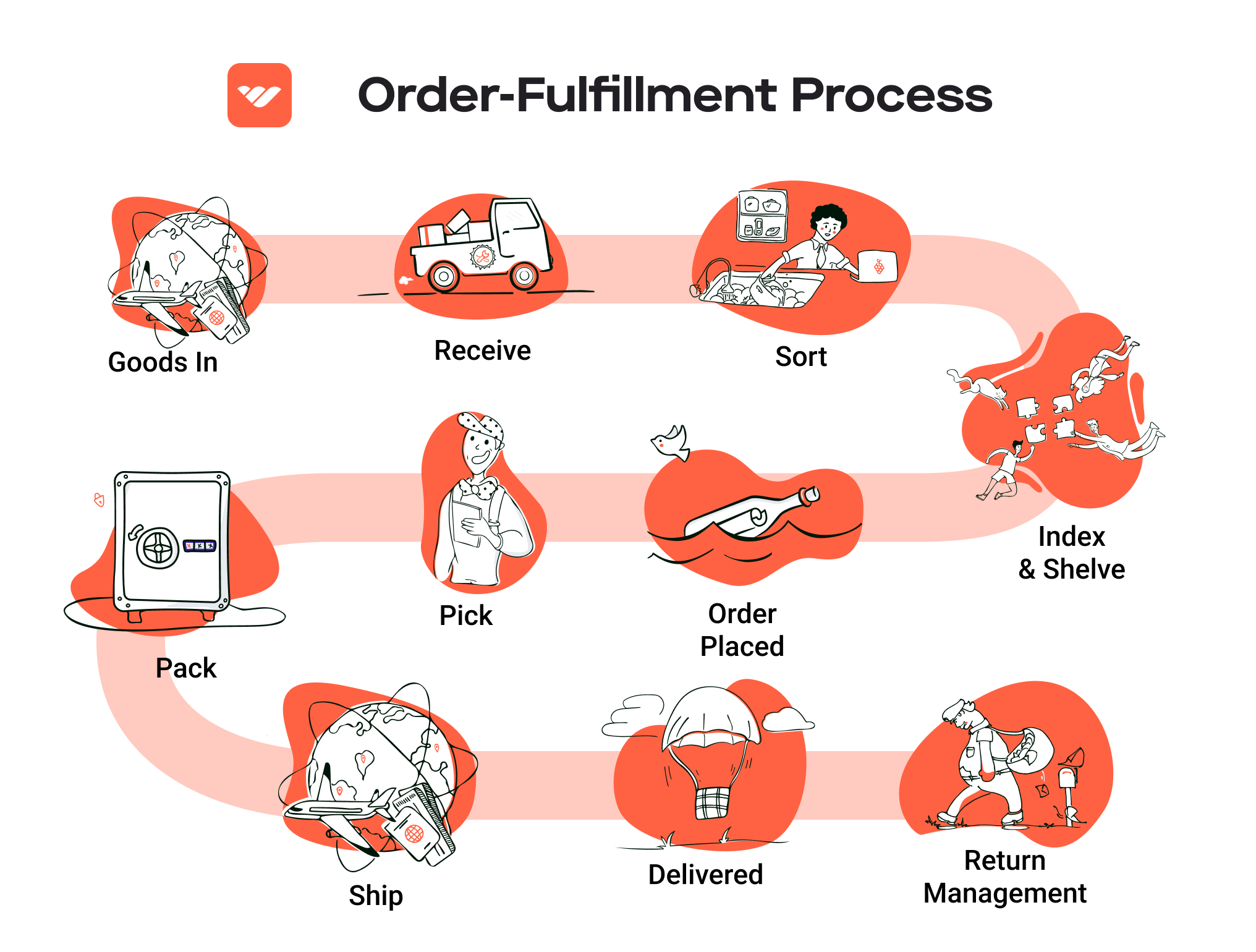
This system allows sellers to focus on other aspects of their business, such as marketing and product development, while Amazon manages the logistics.
Pros of Using FBA
1. Prime Eligibility
One of the most significant advantages of using FBA is that products become eligible for Amazon Prime. This means that Prime members can receive their orders with expedited shipping, often within two days. The Prime badge increases visibility and can lead to higher sales, as Prime members tend to prefer products that offer faster shipping options.
2. Customer Trust
Amazon is one of the most trusted e-commerce platforms globally. By utilizing FBA, sellers can benefit from Amazon’s reputation for reliability and customer service. Products fulfilled by Amazon are often perceived as more trustworthy, which can lead to increased sales and customer loyalty.
3. Multi-Channel Fulfillment
FBA isn’t limited to just Amazon sales. Sellers can use FBA to fulfill orders from other channels, such as their own websites or other marketplaces. This flexibility allows businesses to centralize their inventory management and streamline their fulfillment processes across multiple sales channels.
4. Simplified Logistics
FBA simplifies the logistics process for sellers. From storage to shipping and handling returns, Amazon manages all aspects of order fulfillment. This allows sellers to save time and reduce the complexities associated with logistics management, enabling them to focus on growth strategies.
5. Scalability
FBA allows businesses to scale quickly. As demand for products increases, sellers can send more inventory to Amazon without needing to invest in additional warehousing or staffing. This scalability is especially beneficial for seasonal or trending products.
Cons of Using FBA
1. High Fees
While FBA provides numerous benefits, it also comes with high fees. Sellers must pay for storage, fulfillment, and various other service fees. Depending on the size and weight of the products, these costs can add up quickly, potentially eating into profit margins.
2. Strict Inventory Rules
Amazon has stringent inventory management rules that sellers must adhere to. This includes limits on the amount of inventory that can be stored and strict guidelines on the condition of products. Non-compliance can result in additional fees or removal of inventory.
3. Commingling Risks
When products are stored in Amazon’s fulfillment centers, they may be commingled with similar products from other sellers. This means that there is a risk of receiving returns or damaged products that do not belong to the seller. This can lead to customer dissatisfaction and potential brand reputation issues.
4. Loss of Control
Using FBA means that sellers relinquish some control over the fulfillment process. Amazon’s policies dictate how products are stored, packaged, and shipped. Any changes in Amazon’s policies or fulfillment practices can directly impact a seller’s business.
5. Limited Customization
FBA offers limited options for branding and packaging. Sellers cannot include promotional materials or customize packaging, which can hinder branding efforts. This is particularly important for businesses that rely on unboxing experiences to enhance customer satisfaction.
Who is FBA Best For?
FBA is best suited for e-commerce businesses looking to scale quickly and efficiently. It is particularly advantageous for:
-
Small to Medium-Sized Businesses: Companies that lack the resources to manage logistics in-house can benefit greatly from the streamlined process that FBA offers.
-
Businesses with High Sales Volume: Sellers with high turnover rates can leverage Amazon’s infrastructure to manage inventory and fulfillment, allowing them to focus on growth.
-
Sellers of Consumer Goods: Brands that sell popular consumer products can take advantage of the Prime eligibility to drive sales and increase visibility.
-
Entrepreneurs Seeking Market Entry: New sellers who want to enter the e-commerce space without the burden of managing logistics can find FBA an attractive option.
In conclusion, while FBA presents an attractive solution for many e-commerce businesses, it is essential to weigh the pros and cons carefully. Understanding the fees, inventory management rules, and potential risks involved can help sellers make informed decisions about whether FBA aligns with their business goals.
Core Services Offered by Fulfillment Centers
Inventory Management & Warehousing
Inventory management and warehousing are foundational services provided by fulfillment centers. This process involves the systematic handling and storage of products before they are sold. Fulfillment centers utilize advanced inventory management systems that allow e-commerce businesses to track stock levels in real-time, ensuring that they maintain optimal inventory levels to meet customer demand.
Benefits:
1. Efficiency: Automated inventory management reduces the risk of human error and allows businesses to quickly identify which products are in stock, which need to be reordered, and which may be slow-moving.
2. Cost Savings: By outsourcing warehousing, businesses can significantly lower overhead costs associated with maintaining their own storage facilities. Fulfillment centers typically have the infrastructure and technology to manage inventory more effectively and at scale.
3. Space Optimization: Fulfillment centers are designed to maximize space utilization, allowing businesses to store a larger quantity of products without incurring the costs of larger facilities.
Pick and Pack Services
Pick and pack services refer to the process of selecting items from inventory (picking) and preparing them for shipment (packing). When an order is placed, fulfillment centers retrieve the ordered items from their storage locations, package them securely, and label them for shipment. This process is often streamlined through the use of technology, such as barcode scanning and automated packing systems.
Benefits:
1. Speed and Accuracy: Fulfillment centers are equipped with trained staff and efficient processes that ensure orders are picked and packed quickly and accurately. This leads to shorter fulfillment times and higher customer satisfaction rates.
2. Customization: Many fulfillment centers offer customized packing options, allowing businesses to enhance their branding through tailored packaging. This can include branded boxes, promotional inserts, or special wrapping for gifts.
3. Scalability: As e-commerce businesses grow, their order volumes can fluctuate. Fulfillment centers can easily scale their pick and pack services to meet increasing demand, ensuring that businesses can handle peak seasons without sacrificing service quality.
Kitting and Assembly
Kitting and assembly involve creating ready-to-ship packages by bundling multiple products together into a single unit. This service is particularly beneficial for businesses that sell products that are often purchased together or require assembly before shipping. For example, a company selling a gift set may use kitting to combine various items into a cohesive package.
Benefits:
1. Enhanced Customer Experience: Offering kitted products can create a more appealing shopping experience, as customers appreciate the convenience of purchasing multiple related items in one package.
2. Inventory Management: Kitting allows businesses to better manage their inventory by reducing the number of individual SKUs they need to track. Instead of managing each item separately, businesses can manage kits as single units.
3. Increased Sales Opportunities: Kitting can lead to higher average order values. Customers may be more inclined to purchase a bundled product that offers perceived savings or added value compared to buying items individually.
Returns Management (Reverse Logistics)
Returns management, or reverse logistics, is the process of handling returned goods from customers. This service encompasses everything from receiving returned items to restocking them or processing them for resale. A well-managed returns process is crucial for maintaining customer satisfaction and loyalty, as it can significantly impact the overall shopping experience.
Benefits:
1. Streamlined Processes: Fulfillment centers specialize in handling returns efficiently, reducing the time and resources businesses need to allocate to manage returns in-house. This includes assessing the condition of returned items, restocking, and managing exchanges or refunds.
2. Customer Retention: A hassle-free returns process can enhance customer trust and satisfaction. When customers feel confident that they can easily return products, they are more likely to make purchases, leading to increased sales and repeat business.
3. Data Insights: Fulfillment centers can provide valuable data on return reasons, helping businesses identify potential issues with products or fulfillment processes. This insight can inform product development and marketing strategies, ultimately improving overall customer satisfaction.
In summary, leveraging the core services offered by fulfillment centers—inventory management and warehousing, pick and pack services, kitting and assembly, and returns management—enables e-commerce businesses to streamline their operations, enhance customer satisfaction, and scale effectively in a competitive market. By outsourcing these services, business owners can focus on core activities such as product development and marketing, while ensuring efficient logistics management that supports growth.
How to Choose a Fulfillment Partner: A 6-Point Checklist
Location & Warehouse Network
Choosing a fulfillment partner with a strategically located warehouse network is crucial for ensuring timely delivery and reduced shipping costs. A partner with warehouses close to your major customer bases can significantly enhance your service levels.
Key Questions to Ask:
– Where are your warehouses located, and how does this align with our target markets?
– Do you have a network of fulfillment centers that can cover both national and international shipping needs?
– How do you manage inventory across multiple locations?
Technology & Integrations
In today’s digital landscape, the technology and systems a fulfillment partner employs can make or break your logistics operations. Robust technology ensures real-time inventory tracking, order processing efficiency, and seamless integration with your e-commerce platform.
Key Questions to Ask:
– What fulfillment management system do you use, and how does it integrate with our existing e-commerce platforms (e.g., Shopify, Amazon)?
– Can you provide real-time tracking for orders and inventory?
– How do you handle technology upgrades and data security?
Specializations (e.g., Cold Storage, Oversized Items)
Depending on your product line, you may require a partner that specializes in certain types of fulfillment, such as cold storage for perishables or handling oversized items. Identifying a partner with the right capabilities can streamline your operations and reduce potential issues.
Key Questions to Ask:
– Do you have experience fulfilling products similar to ours, particularly in terms of size, weight, or temperature requirements?
– What special handling processes do you have in place for fragile, perishable, or oversized items?
– Can you provide case studies or references from clients with similar needs?
Scalability & Capacity
As your business grows, so too will your fulfillment needs. It’s essential to partner with a 3PL that can scale alongside your business, whether it’s handling increased order volumes during peak seasons or expanding to new markets.
Key Questions to Ask:
– What is your capacity for handling increased order volumes, and how do you manage peak seasons?
– Are there any limitations on storage space or order processing that we should be aware of?
– How do you handle unexpected surges in demand?
Pricing and Contracts
Understanding the pricing structure and contractual obligations is vital to avoid unexpected costs and ensure you receive value for your investment. A transparent pricing model will help you budget effectively and assess the long-term feasibility of the partnership.
Key Questions to Ask:
– Can you provide a detailed breakdown of your pricing structure, including warehousing, picking, packing, shipping, and returns?
– Are there any hidden fees we should be aware of, such as for storage or handling?
– What are the terms of the contract, and how flexible are they in terms of scaling or changing services?
Customer Support & Reviews
Excellent customer support can significantly enhance your fulfillment experience. A responsive and knowledgeable support team can help resolve issues quickly, minimizing disruptions to your business. Additionally, researching reviews and testimonials can provide insights into the reliability and quality of service.
Key Questions to Ask:
– What kind of customer support do you provide, and how can we reach you in case of issues?
– Can you share any customer testimonials or case studies that demonstrate your service quality?
– How do you handle disputes or problems that may arise during the fulfillment process?
Conclusion
Choosing the right fulfillment partner is a critical decision that can impact your e-commerce business’s efficiency and customer satisfaction. By carefully evaluating potential partners based on the six key criteria outlined above, you can make an informed decision that aligns with your operational needs and growth objectives. Remember, the right partner will not only handle your logistics but also contribute to your overall success in the marketplace.
Understanding Fulfillment Pricing: A Breakdown of Common Fees
Initial Setup Fees
Initial setup fees are typically one-time charges incurred when you first engage with a third-party logistics (3PL) provider. These fees cover the administrative and operational costs associated with integrating your e-commerce platform with the fulfillment center’s systems. The setup process may include inventory onboarding, system configuration, and training on the software tools provided by the 3PL.
The amount of the initial setup fee can vary significantly depending on the complexity of your requirements. For instance, a business with a simple product catalog may face lower fees compared to a business with a large inventory requiring customized integrations or special handling instructions. On average, initial setup fees can range from a few hundred to several thousand dollars.
Receiving Fees
Receiving fees are charged for the process of accepting and processing incoming inventory at the fulfillment center. This fee typically covers the costs associated with unloading, inspecting, and storing your products once they arrive at the 3PL’s facility.
Receiving fees are usually calculated based on the volume of goods received, which can be measured in units, pallets, or containers. Some providers may charge a flat fee per shipment, while others may implement a tiered pricing structure where the cost per unit decreases as the volume of goods increases. It’s essential to understand how your 3PL calculates these fees, as they can significantly impact your overall fulfillment costs.
Storage Fees (per pallet/bin)
Storage fees are ongoing charges for the space your inventory occupies within the fulfillment center. These fees are generally calculated on a per-pallet or per-bin basis, depending on how the 3PL organizes its warehouse space.
Storage fees can fluctuate based on several factors, including the location of the fulfillment center, the type of products being stored (some items may require special handling or conditions), and the duration of storage. For instance, businesses may face higher storage fees for long-term inventory, as many 3PLs implement additional charges for items that remain in storage beyond a specified period. Understanding your inventory turnover rate is crucial to managing these costs effectively.
Pick & Pack Fees (per item/order)
Pick and pack fees are charged for the labor involved in selecting items from storage and preparing them for shipment. This process includes picking the items, packing them securely, and labeling them for delivery.
These fees are typically calculated on a per-item or per-order basis. For example, a 3PL may charge a standard rate for each item picked and packed, or they may offer bundled pricing for multiple items within a single order. Additionally, fees can vary based on the complexity of the packing process, such as the need for custom packaging or special handling instructions. Understanding these fees can help you optimize your product offerings and shipping methods to minimize costs.
Shipping Fees
Shipping fees encompass the costs associated with transporting orders from the fulfillment center to the customer. These fees can vary based on several factors, including the shipping method chosen (e.g., standard, expedited, or international), the weight and dimensions of the package, and the destination.
Most 3PL providers will negotiate shipping rates with carriers, allowing them to offer competitive pricing to their clients. However, these rates can fluctuate based on market conditions, such as fuel costs or carrier capacity. It’s crucial to clarify whether the shipping fees are included in your overall fulfillment pricing or if they will be billed separately. Additionally, understanding how your 3PL calculates these fees can help you choose the most cost-effective shipping options for your business.
Tips for Getting an Accurate Quote
To obtain an accurate quote from a 3PL provider, consider the following tips:
-
Provide Detailed Information: Clearly outline your inventory size, product types, and any special handling requirements. This information will help the provider assess your needs more accurately.
-
Understand Your Fulfillment Needs: Analyze your expected order volumes, seasonal fluctuations, and any unique aspects of your fulfillment process. This insight will enable the 3PL to tailor their pricing to your specific situation.
-
Ask About All Potential Fees: Inquire about any additional fees that may not be immediately apparent, such as returns processing, kitting, or technology integration charges.
-
Compare Multiple Quotes: Don’t settle for the first quote you receive. Compare offers from various providers to ensure you’re getting the best value for your specific logistics needs.
-
Negotiate Terms: Once you have quotes, don’t hesitate to negotiate terms, especially if you’re committing to a long-term partnership. Many 3PLs are open to adjusting their pricing to secure your business.
By following these steps, you can ensure that you receive a comprehensive and accurate quote that reflects your business’s fulfillment needs.
Frequently Asked Questions (FAQs) about Fulfillment
1. What is third-party fulfillment?
Third-party fulfillment refers to the outsourcing of logistics and supply chain operations to a third-party logistics (3PL) provider. This includes managing inventory, packing orders, and shipping products directly to customers on behalf of an e-commerce business. By leveraging a 3PL, businesses can focus on their core activities while benefiting from the expertise and resources of the fulfillment provider.
2. What is a fulfillment center?
A fulfillment center is a specialized warehouse designed to handle the entire order fulfillment process for e-commerce businesses. This includes receiving inventory, storing products, picking and packing orders, and shipping them to customers. Fulfillment centers are equipped with technology and systems to streamline operations and enhance efficiency, ultimately improving customer satisfaction through faster delivery times.
3. How does a fulfillment center differ from a warehouse?
While both fulfillment centers and warehouses store goods, they serve different purposes. A warehouse primarily focuses on long-term storage of products, often with less frequent movement of items. In contrast, a fulfillment center is an active operation where products are regularly picked, packed, and shipped based on customer orders, emphasizing speed and efficiency in the order fulfillment process.
4. What is a 3PL (third-party logistics) provider?
A 3PL provider offers a range of logistics services, including warehousing, order fulfillment, transportation, and inventory management. They act as an intermediary between businesses and their logistics operations, allowing companies to outsource these functions. This can help businesses scale operations, reduce costs, and enhance service quality without the need for in-house logistics capabilities.
5. How much do fulfillment services cost?
The cost of fulfillment services can vary widely based on several factors, including the volume of orders, the type of products being shipped, storage requirements, and the specific services provided (such as kitting or returns management). Generally, businesses can expect to pay for storage space, picking and packing fees, shipping costs, and any additional services. It’s advisable to request quotes from multiple 3PL providers to compare pricing and services.
6. What services do 3PL fulfillment companies typically offer?
3PL fulfillment companies offer a comprehensive suite of services, including inventory management, order processing, picking and packing, shipping, returns management, and sometimes even customer service and sales support. They may also provide technology solutions for tracking inventory and orders, allowing businesses to gain visibility into their logistics operations.
7. How can a 3PL help my e-commerce business grow?
Partnering with a 3PL can enable e-commerce businesses to scale operations efficiently by providing access to advanced logistics capabilities without the overhead costs of managing in-house fulfillment. 3PLs can help improve delivery times, enhance customer satisfaction, and allow businesses to focus on product development and marketing. This can lead to increased sales and market reach.
8. What should I consider when choosing a fulfillment partner?
When selecting a fulfillment partner, consider factors such as the provider’s experience in your industry, the range of services offered, technology integration capabilities, shipping options, pricing structures, and customer service reputation. It’s also crucial to assess their fulfillment speed and accuracy, as these directly impact customer satisfaction.
9. Can I integrate a 3PL with my existing e-commerce platform?
Yes, most reputable 3PL providers offer integration capabilities with popular e-commerce platforms such as Shopify, WooCommerce, and Amazon. This integration allows for seamless order processing, inventory tracking, and real-time updates, enabling businesses to streamline operations and maintain visibility over their supply chain.
10. What are the benefits of using a 3PL for order fulfillment?
Using a 3PL for order fulfillment offers numerous benefits, including reduced operational costs, improved order accuracy, faster shipping times, and enhanced scalability. 3PLs also provide access to advanced logistics technology and expertise, which can improve overall efficiency and customer experience. Additionally, outsourcing fulfillment allows businesses to focus on strategic growth areas such as product development and marketing.
Conclusion: Is Outsourcing Fulfillment the Right Move for Your Business?
Evaluating the Benefits of Outsourcing Fulfillment
Outsourcing fulfillment can be a transformative decision for e-commerce businesses, providing a range of advantages that can significantly impact growth and operational efficiency. By partnering with a third-party logistics (3PL) provider, businesses can save valuable time and resources. This allows owners and managers to concentrate on core activities such as product development and marketing, rather than getting bogged down in the complexities of inventory management, order processing, and shipping logistics.
Scalability is another key benefit of outsourcing fulfillment. As your business grows, a reliable 3PL partner can seamlessly accommodate increased order volumes without the need for substantial investments in warehousing or staffing. This flexibility enables businesses to respond quickly to market demands and seasonal fluctuations, ensuring that customer satisfaction remains high.
Moreover, 3PL providers bring specialized expertise to the table. With extensive knowledge of logistics, shipping regulations, and supply chain management, these partners can optimize the fulfillment process, reduce shipping costs, and enhance overall service quality. Their established networks and technologies can streamline operations, enabling faster delivery times and improved customer experiences.
However, the success of outsourcing fulfillment hinges on selecting the right partner. Not all 3PL providers are created equal, and aligning your business needs with a provider’s capabilities is essential for long-term growth. It’s crucial to conduct thorough research and consider factors such as pricing structures, service offerings, and technology integrations.
To determine if outsourcing fulfillment is the right move for your business, we encourage you to audit your current shipping process. Assess areas where efficiency can be improved or costs reduced. By evaluating your logistics strategy and considering the potential benefits of partnering with a 3PL provider, you can make a more informed decision that supports your business’s growth trajectory.
Important Disclaimer
⚠️ Important Disclaimer
The information in this guide is for educational purposes. Fulfillment services, pricing, and platform features change frequently. Always conduct your own due diligence and consult with providers directly before making business decisions.
